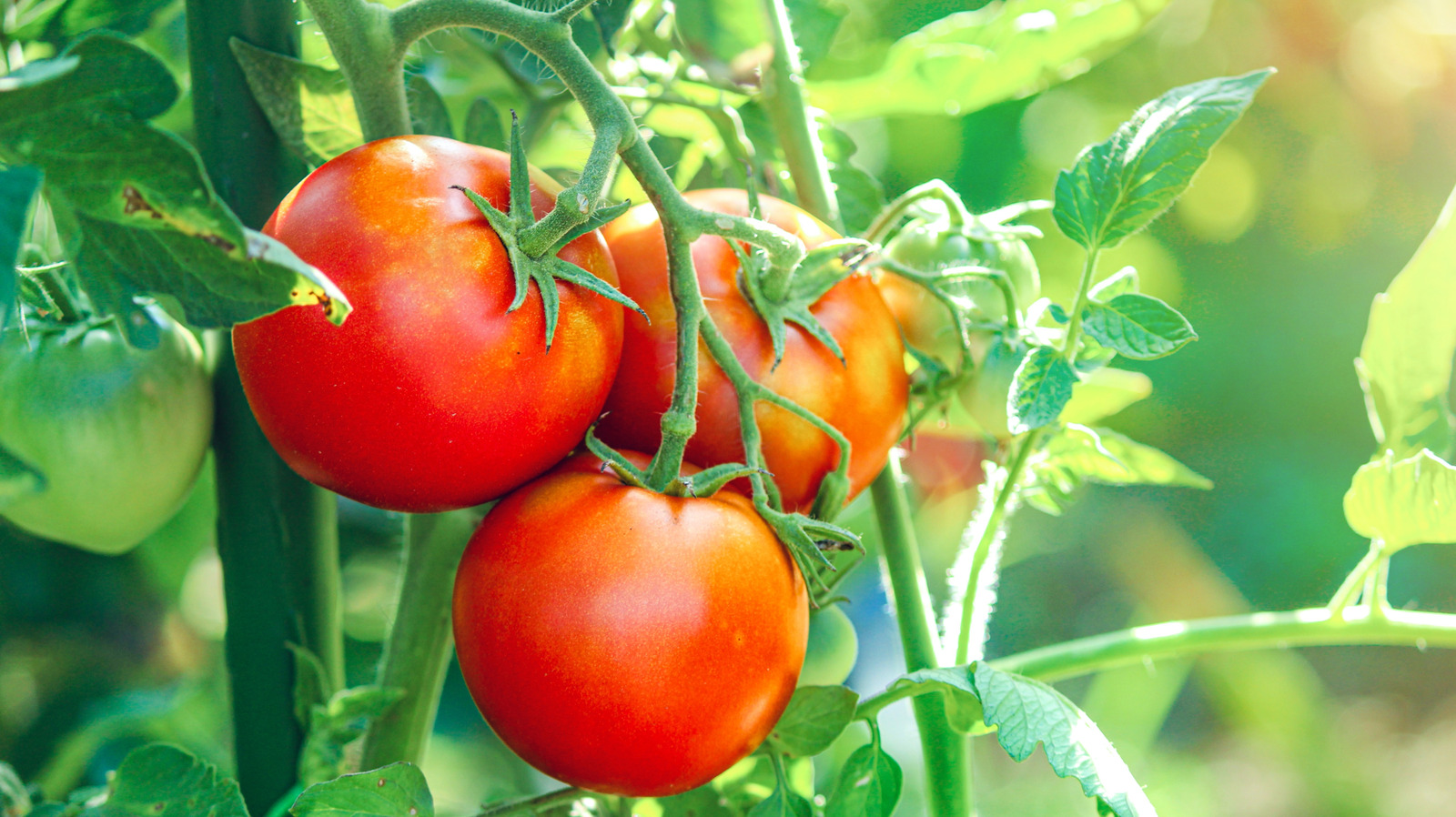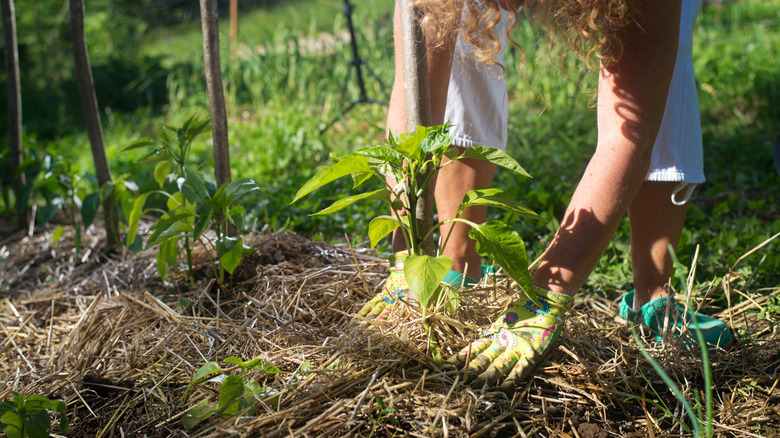There’s nothing like growing your own tomatoes (after all, BLTs with homegrown tomatoes just hit different). If you’re new to growing, there may be plenty of things you don’t know about tomatoes, but that doesn’t mean you can’t have success. In order to keep your garden pristine, Food Republic spoke to Luke Hammond, farmer, educator, and Seedtime Director of Brand Advancement, to find out his favorite tips to make sure your tomato plants stay pest and fungus-free.
According to Hammond, adding mulch (which is a general term for any material put onto your soil) around tomato plants is great for both moisture retention and weed suppression. Mulch prevents rapid evaporation after watering, which can reduce stress to your plants. “You can manage water differently with less frequent watering to help with fungal pressure,” Hammond explained. Mulch is an easy way to ward off weeds as it limits the amount of space available for weeds to grow. “Additionally, without the crowded space, more airflow is achieved, helping fight against fungal pressure and disease,” Hammond added.
There are plenty of types to choose from, with popular options including straw, shredded leaves, and composted bark or wood chips. Hammond likes shredded leaves in particular, noting that they’re easy to get and are packed with nutrients that feed your tomato plants as they break down. You can also go with polyfilm plastic mulch or woven weed mat fabric, which have “excellent moisture retention and light suppression for weeds.”
The best time to add mulch to a tomato plant
You want to make sure you’re adding mulch at the right time, and the best time of year is usually around late spring, right after the soil has had the chance to warm up. “Additionally, you can add mulch in the fall as a soil insulator for winter to help protect overwintered crops,” Luke Hammond recommended.
Keep in mind, though, that adding mulch too early in the year can do the reverse and actually stunt your plant’s growth by keeping the soil too cool. If you do have mulch down during the winter months, Hammond recommended simply raking it back in the spring so that the soil underneath has a chance to warm up.
When adding mulch, don’t use thick, dense layers, and instead keep plenty of space for airflow. “[Dense layers] can suffocate the soil and hold too much moisture, inviting fungal diseases,” Hammond said. You’ll also want to avoid piling the mulch too close to the stem, as this can lead to “rot and pest problems.” Once the season is over and you’ve harvested your tomatoes, make sure you store them properly with two steps, so they can last as long as possible. Once they’ve ripened on the counter, put them in the fridge.





